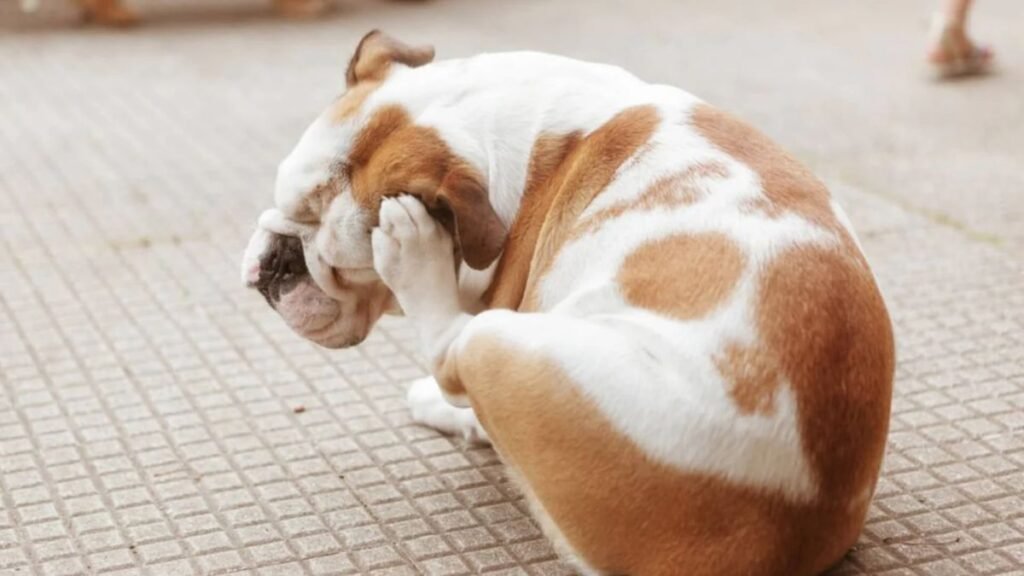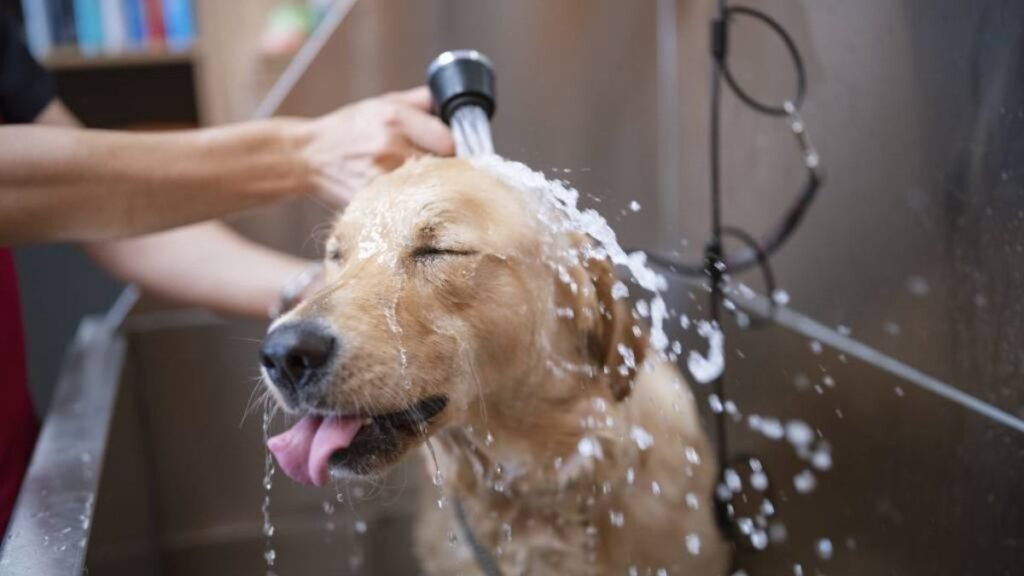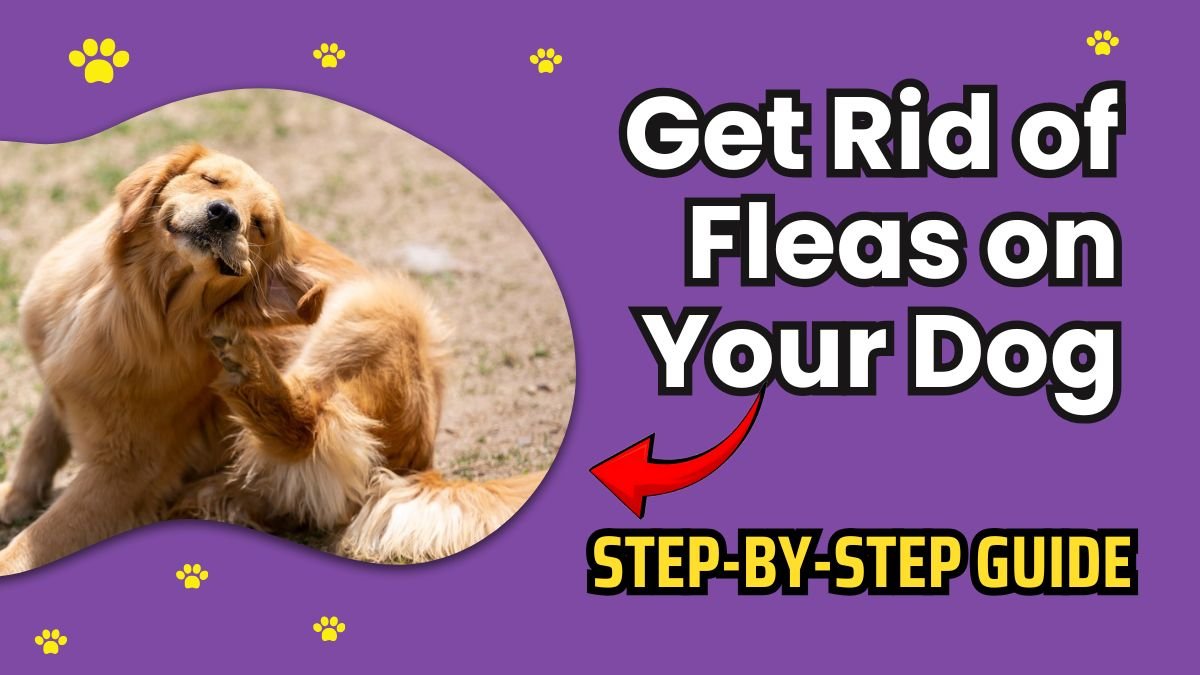Fleas, which look small and insignificant, can become a big problem when they enter your home. These tiny, wingless parasites suck the blood of their host, causing extreme itching and irritation to the dog. While it is not just an uncomfortable experience, fleas can cause serious health hazards to dogs. This article will tell you how to completely eliminate fleas from a dog as well as what measures should be followed for cleaning the house and the dog.
What are the symptoms of fleas?

It is not that difficult to identify the problems caused by fleas. Here we will discuss in detail the common symptoms of fleas in dogs:
1. Flea bites
- Flea bites can cause red spots or bumps to appear on the dog’s skin. These usually occur on the neck, back, and legs but can sometimes occur in other parts as well.
2. Itching and irritation
- After flea bites, the dog’s skin becomes irritated and itchy. The itching is most severe at the base of the dog’s tail, hind legs, and anal area, but it can spread to other parts of the body.
3. The dog bites or licks itself
- The dog may develop a habit of repeatedly biting or licking its skin, which can also injure its skin. This can increase the severity of the flea problem.
4. Hair loss
- A severe flea problem can cause the dog to lose hair, especially in areas where the flea infestation is high.
5. Excessive grooming
- The dog may try to lick or scratch its body more often. This is a common sign that it is bothered by fleas.
6. Flea feces
- The dog may have black spots on its skin, called “flea feces.” These feces are released from the bodies of the fleas and indicate that the fleas are active.
7. Flea Eggs and Life Cycle
- Flea eggs can be seen on the dog’s coat as small white specks. These eggs gradually hatch into the next stage of the flea life cycle.
8. Health Problems
- If the flea problem worsens, the dog may develop other problems such as anemia, skin infections, and even tapeworms.
Ways to Get Rid of Fleas

Now that you have recognized the symptoms of fleas, let’s see how to completely eliminate fleas from a dog. There are several effective ways to eliminate fleas, including medical treatments, home remedies, and cleaning.
1. Veterinarian-approved flea treatments
The most effective way to eliminate fleas is to use veterinary-approved medications. These medications are small-form tablet-type or topical treatments that help fight fleas and other parasites in the dog’s body. Some medications eliminate external parasites from the pet’s body immediately, while others remain effective for a longer period of time.
Products like Credelio Quattro, which protects against six types of parasites, can be a great option. This medication protects the dog against ticks, fleas, heartworms, tapeworms, roundworms, and hookworms. This medication kills about 99% of fleas within eight hours and 97% of ticks within 48 hours.
You can find out which medication will be most effective for your dog by consulting a veterinarian.
2. Using a Flea Comb
It is important to use a metal flea comb to remove fleas. This comb helps to remove fleas and their eggs that are stuck in the dog’s hair. The method of combing is different from normal brushing. It is best to use this comb in the bathtub so that you can properly wash away the flea eggs and feces.
Dip the comb in soapy water every few strokes to remove the fleas. If the flea problem is severe, the dog may need to be combed every day. You can set an alarm to remind you to do this regularly.
3. Flea Bath
Giving your dog a flea bath can be an effective way to get rid of fleas instantly. There are many types of flea shampoos and sprays available in the market. The active ingredients in these shampoos help kill the fleas immediately, but they may not provide complete protection against re-infestation in the future.
Therefore, it is best to use a flea bath in combination with another remedy. For example, oatmeal shampoo can help soothe the skin and can be used in combination with a flea shampoo.
4. Treating Fleas at Home
After removing fleas from your dog, it is important to clean your home as well to remove fleas and their eggs. Fleas and their eggs can hide in the house, so clean regularly. Make sure you vacuum your house every other day.
Thoroughly vacuum all furniture, carpets, mattresses, and other flooring. Then vacuum and place the vacuum in a sealed bag before emptying it and throwing it in an outside trash can. Wash your pet’s bedding in hot water and dry it in the sun to kill the fleas and their eggs.
Tips to Prevent Fleas on Dogs
Dealing with fleas can be time- and effort-consuming, but it’s better to prevent them from getting in the first place. You should give your dog regular flea and tick medications to prevent fleas. Although fleas are more common in summer and humid climates, you can still check for fleas year-round.
1. Monthly Medications
- To prevent fleas and ticks, the dog should be given preventive medications every month. These medications provide protection to the dog from inside to outside.
2. Regular testing for fleas and ticks
- Regularly test the dog’s hair for fleas and ticks, especially during the summer season. This will ensure that the dog is completely safe and protected from any infection.
Conclusion
Getting rid of fleas can be a long process, but with the right measures, you can give your dog complete relief. By adopting regular preventive measures along with medications, flea combs, bathing and house cleaning, you can get rid of fleas in your dog. If you face any problem, please consult a veterinarian.
FAQs
Q. How do I know if my dog has fleas?
A. Common signs include excessive scratching, red bumps on the skin, hair loss, and flea dirt (small black specks) on your dog’s coat.
Q. What is the best treatment for fleas on dogs?
A. Vet-approved flea treatments, such as oral medications, topical treatments, or flea collars, are highly effective in getting rid of fleas.
Q. Can I use a flea comb to remove fleas?
A. Yes, using a fine-toothed flea comb regularly helps remove fleas, their eggs, and flea dirt from your dog’s coat.
Q. How often should I bathe my dog to remove fleas?
A. Bathing your dog with a medicated flea shampoo once a week or as advised by your vet can help control an active flea infestation.
Q. How do I prevent fleas on my dog?
A. Regular use of flea and tick preventive medications, routine flea checks, and cleaning your home frequently can help prevent fleas from returning.



